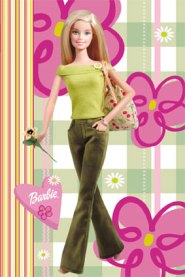This is a story of gender, culture, strategic management and dolls. The New Yorker has run an article about the epic battle between Mattel, owners of the Barbie doll, and M.G.A., the owners of insurgent Bratz doll line. This is old news to the parents of six year old girls, but for the rest of us, Barbie has been rocked by the upstart Bratz. For the first time in nearly forty years, Barbie’s dominance in the toy market has been challenged. It’s a rich tale, read it yourself, but here are some highlights:
- Barbie was launched in 1959 as an alternative to baby dolls. Before Barbie, most companies focused on baby dolls. Barbie was invented to appeal to girls who wanted to be adult and glamorous. Barbie was an instant hit and crushed all competition over the next three decades. Barbie routinely captured about 80-90% of the doll market.
- Around 2001, M.G.A., a California toy importer, marketed a new doll line called “Bratz.” The concept was simple, yet brilliant. Drop the blond thing and the professional career woman thing. Make the doll ethnically ambiguous, not white and blond. Make the dolls figure less ”Barbie.” Then make the dolls “bling-bling.” Instead of having a job, the girls should be bratty party girls. Shopping, dancing and more shopping was the goal. It was an instant hit. Barbie’s market share dropped from about 90% to 60% in just a few years. Bratz are a run away hit overseas.
- Not surprisingly, Barbie sued Bratz. Mattel claims that the M.G.A. employee who invented Bratz was formerly a Mattel employee. Therefore, his contract prohibited him from sharing ideas developed at Mattel with other companies. M.G.A. disagrees.
- The sociology of Barbie dolls: Child researchers know that dolls have many functions. One function is to help the child develop an identity distinct from the parents, so kids are always looking for toys that parents might not like. In the 1960s, Barbie fit the bill perfectly. Tall, physcially well developed and always working in exciting careers, Barbie stymied parents who wanted their kids to stick with baby dolls or more “innocent” toys. As time went on, Barbie’s function changed. Sure, there was always a crowd that idolized Barbie, but many kids treated Barbie as an object of desecration, a trend documented by lots of market research. I bet many of our readers will remember disfiguring and trashing Barbie dolls. As more moms worked outside the home and had high powered careers, Barbie seemed less cutting edge as moms bonded with girls over Barbie and thus more ridiculous. Also, the blond & white ideal embodied by Barbie became less relevant as America became a more ethnically diverse place. Barbie was now the symbol to be mocked.
- The sociology of Bratz dolls: Bratz are the perfect antidote to Barbie malaise. Why? Parents hate Bratz because they party and shop, and not much else. When I went to the local Target the other day, I went to the toy section and found out that the Bratz “Passion 4 Fashion” doll house has its own disco! I also found out that for about $40, you can buy the Bratz runway truck. You see, the Bratz need to set up a run way to show off the clothes they bought at the mall. So you need the truck, which folds out into a stage, so you can have your own runway fashion show. And no, Bling-Bling Barbie is *not* an adequate response (though she does look suspiciously like a Bratz doll…).
- The other remarkable thing about Bratz is they don’t look like Barbie at all. They are short, have trim figures and are of ambigious ethnicity. This is the exact opposite of Barbie, who is tall, busty and definitely blond. What I found odd was that the “ethnic” Barbie looked like the regular Barbie with a bad make up job. The Bratz come in all kinds of convincing colors and because she has curvy eyes and lips, could be of nearly any ethnicity. Add ethnically vague names like “Clara” and “Yasmin” and you have a doll that can be marketed from Iowa to Beijing.
- Technical note: The Bratz earned their share of the market place with an ingenious invention – snap off feet. A problem with Barbie and other dolls was that you lose the shoes all the time because they are so small. With Bratz, you snap off the lower portion of the leg and feet. Because the foot & ankle is larger than the shoe, it’s easier to find and easier for little hands to hold.

No comments:
Post a Comment